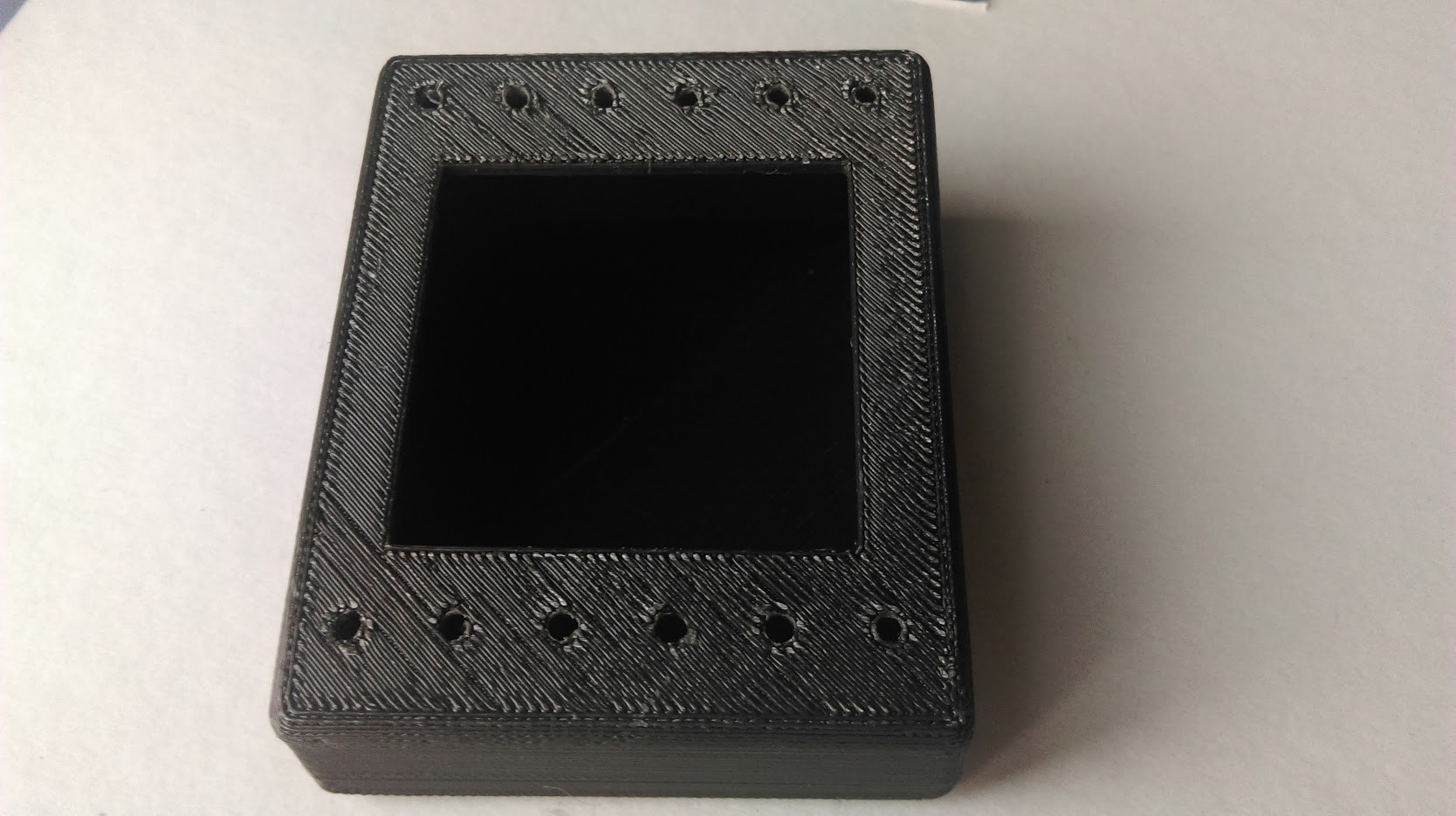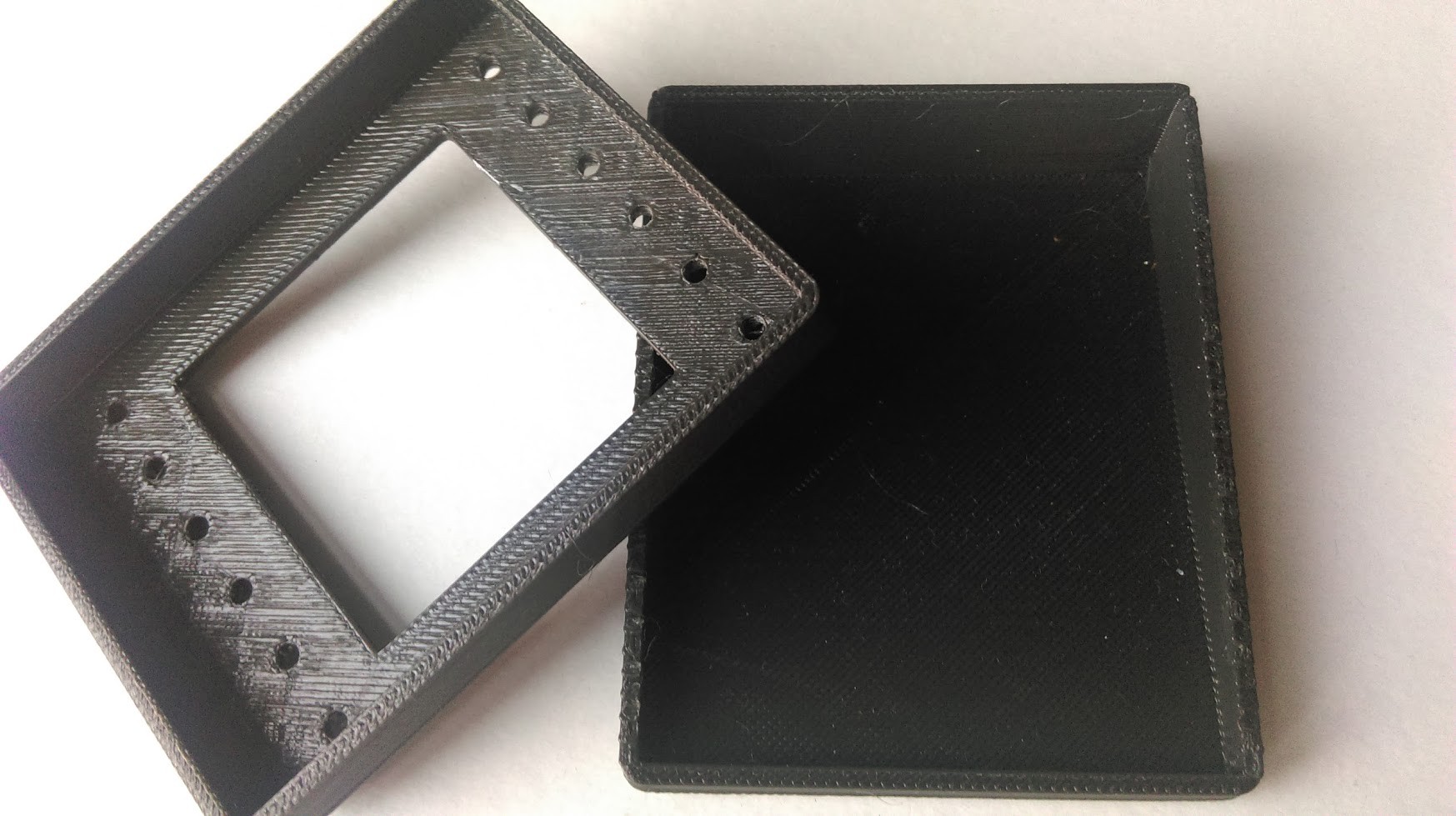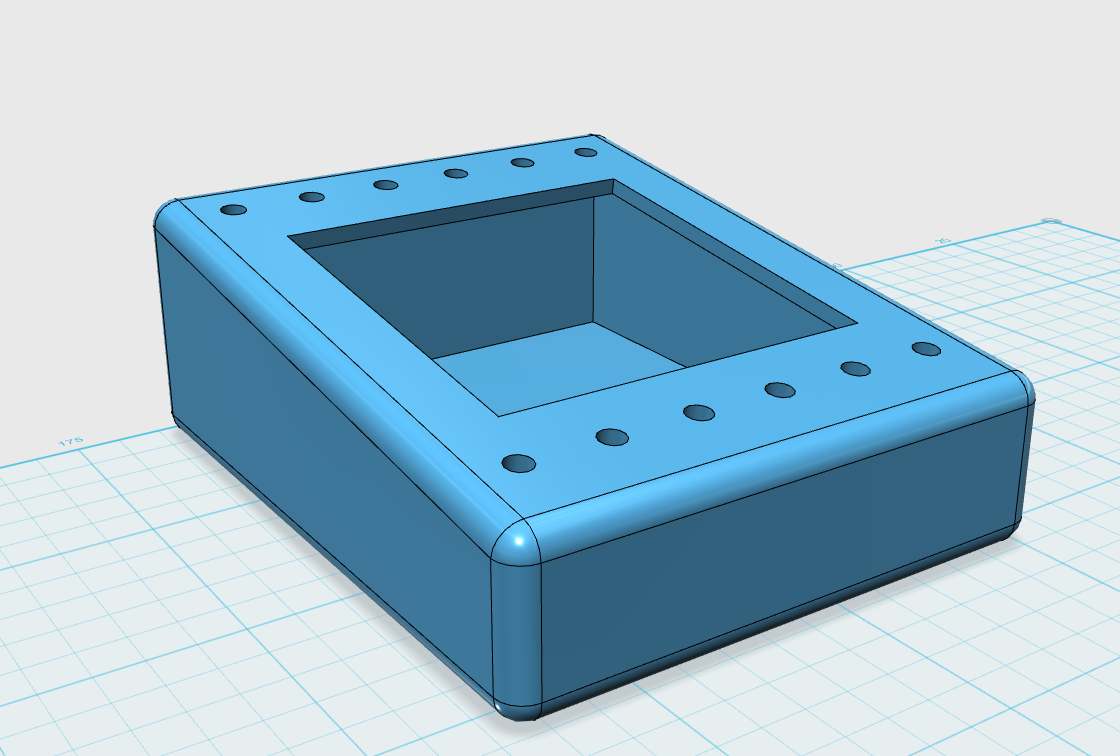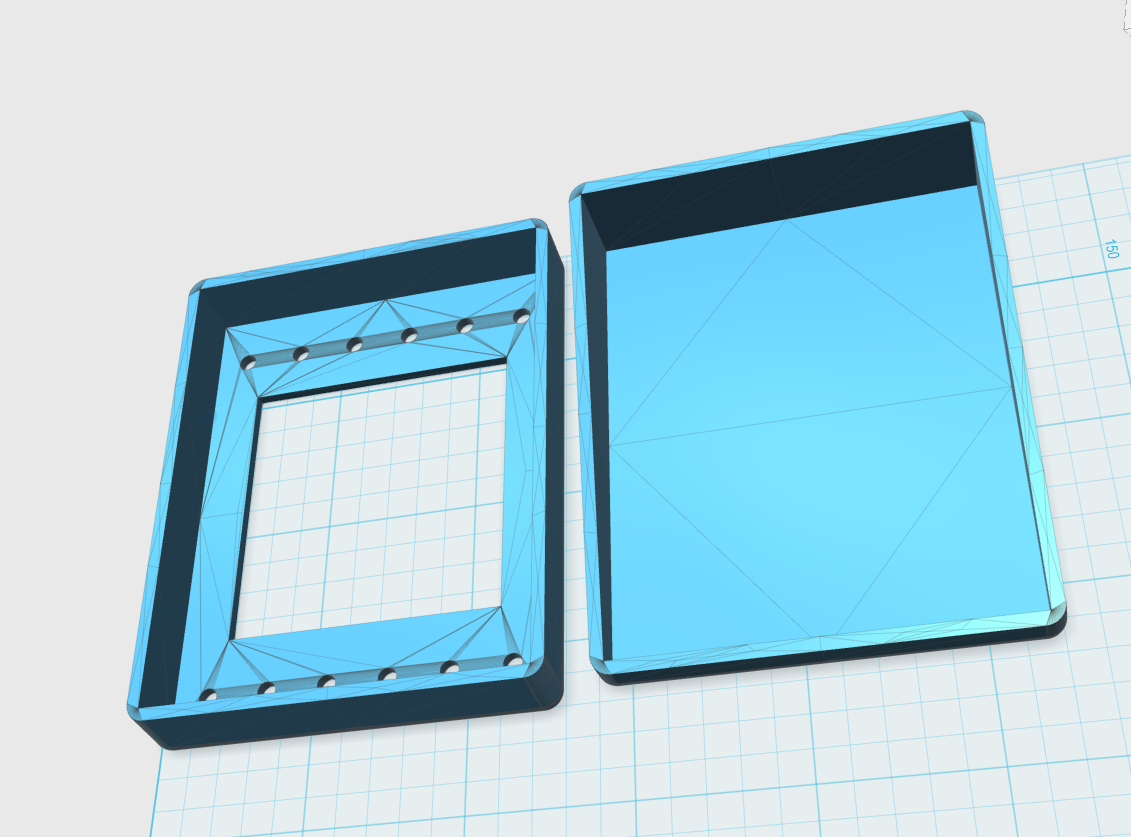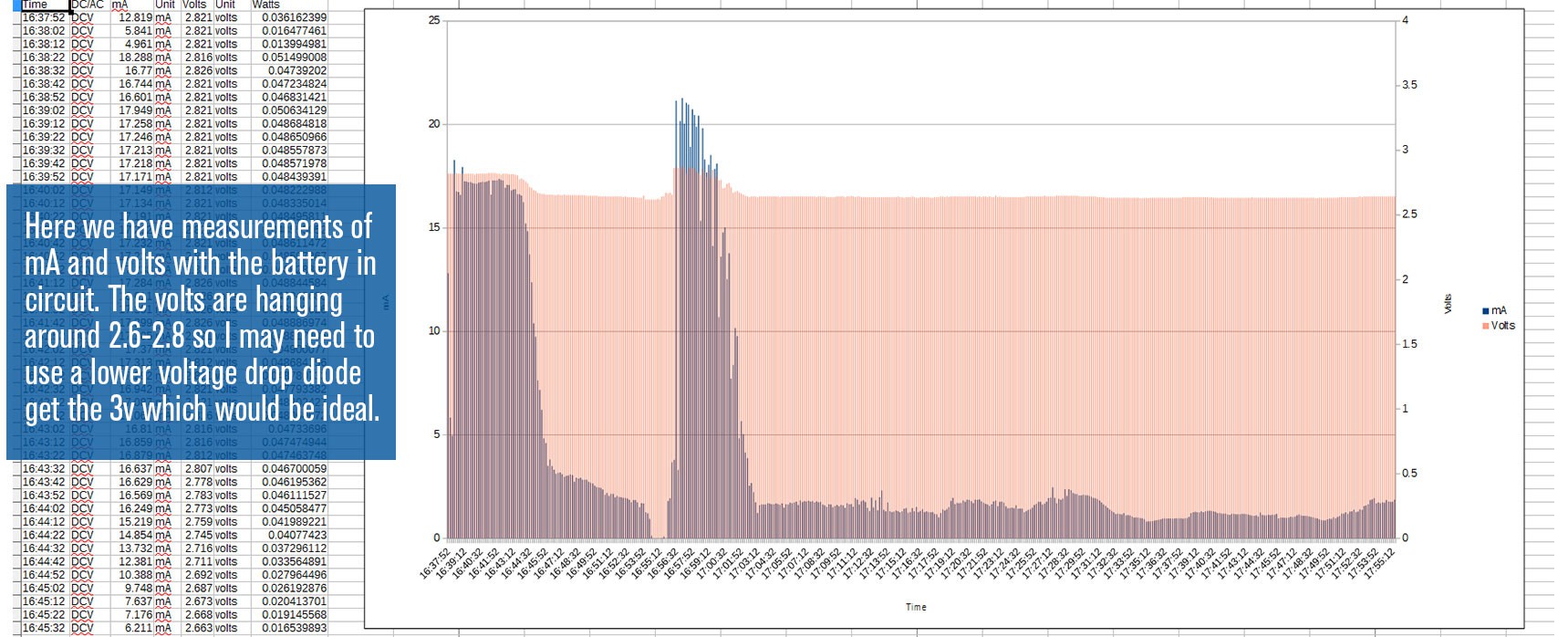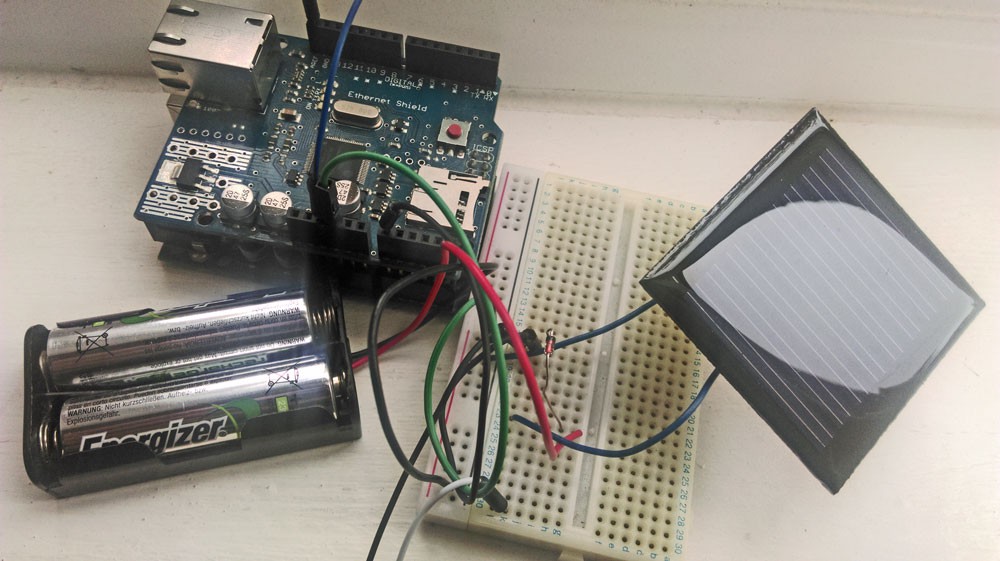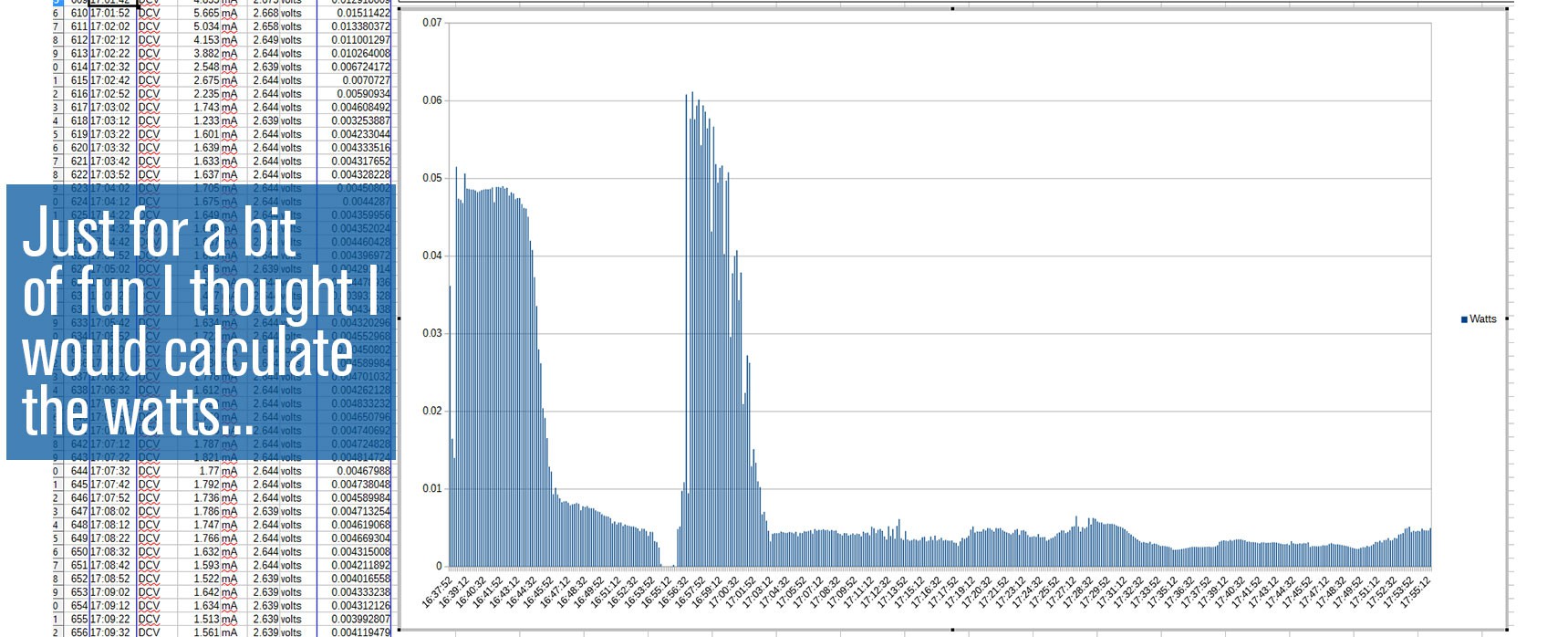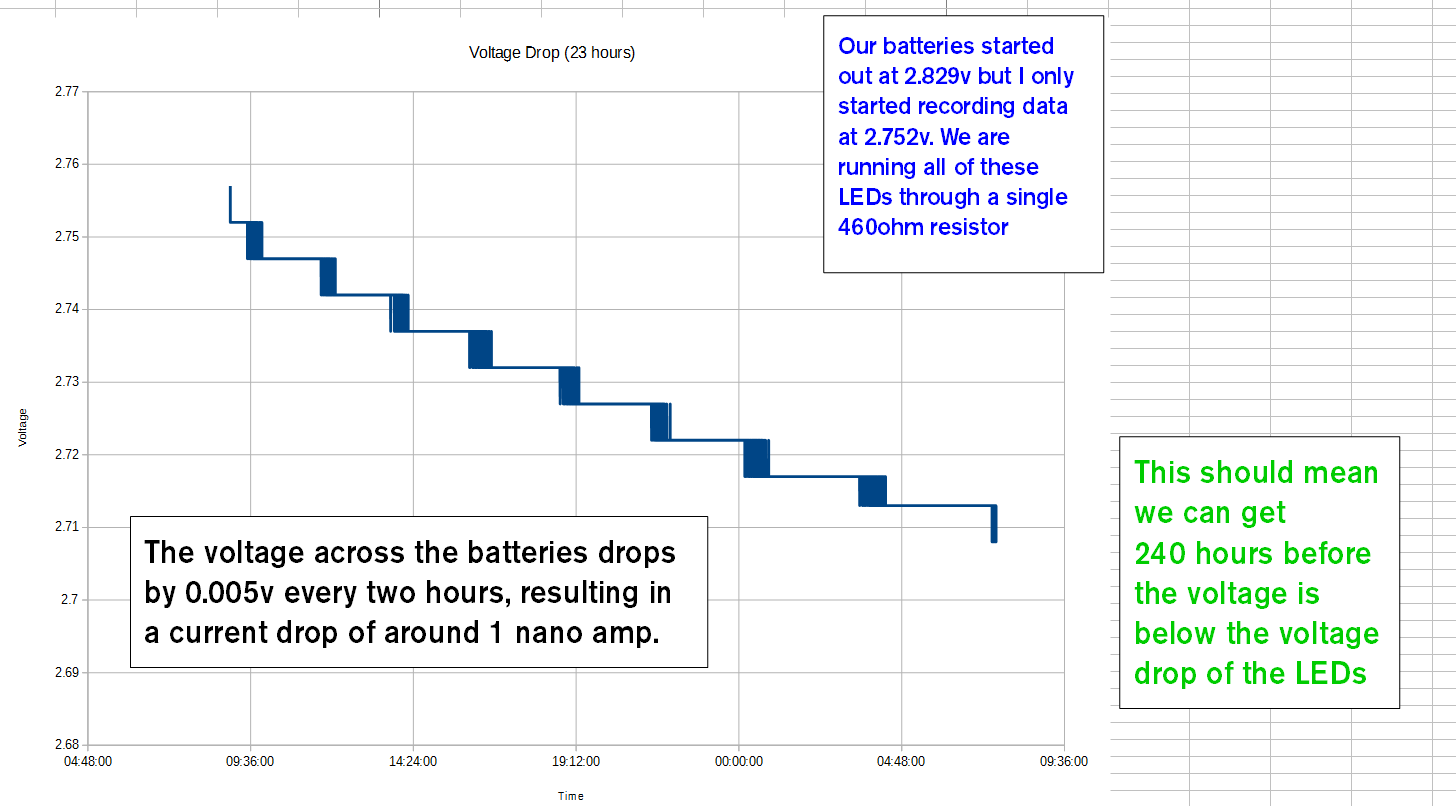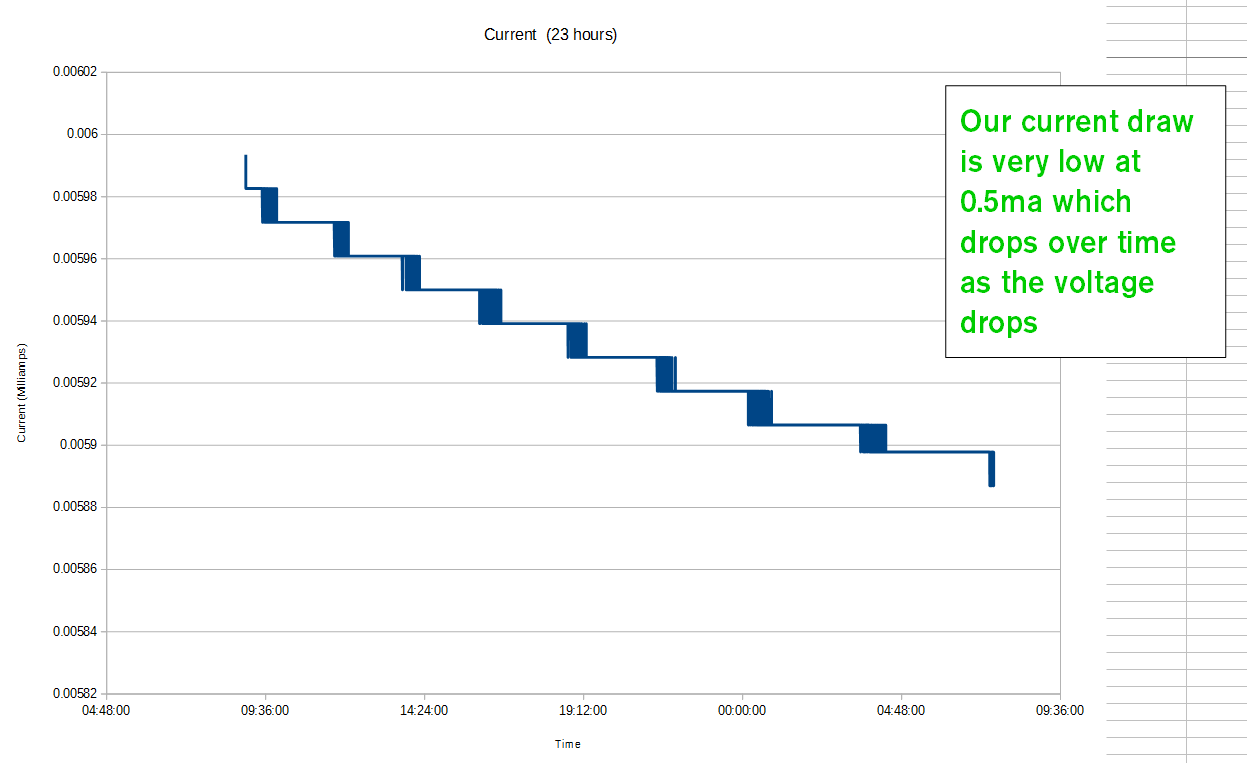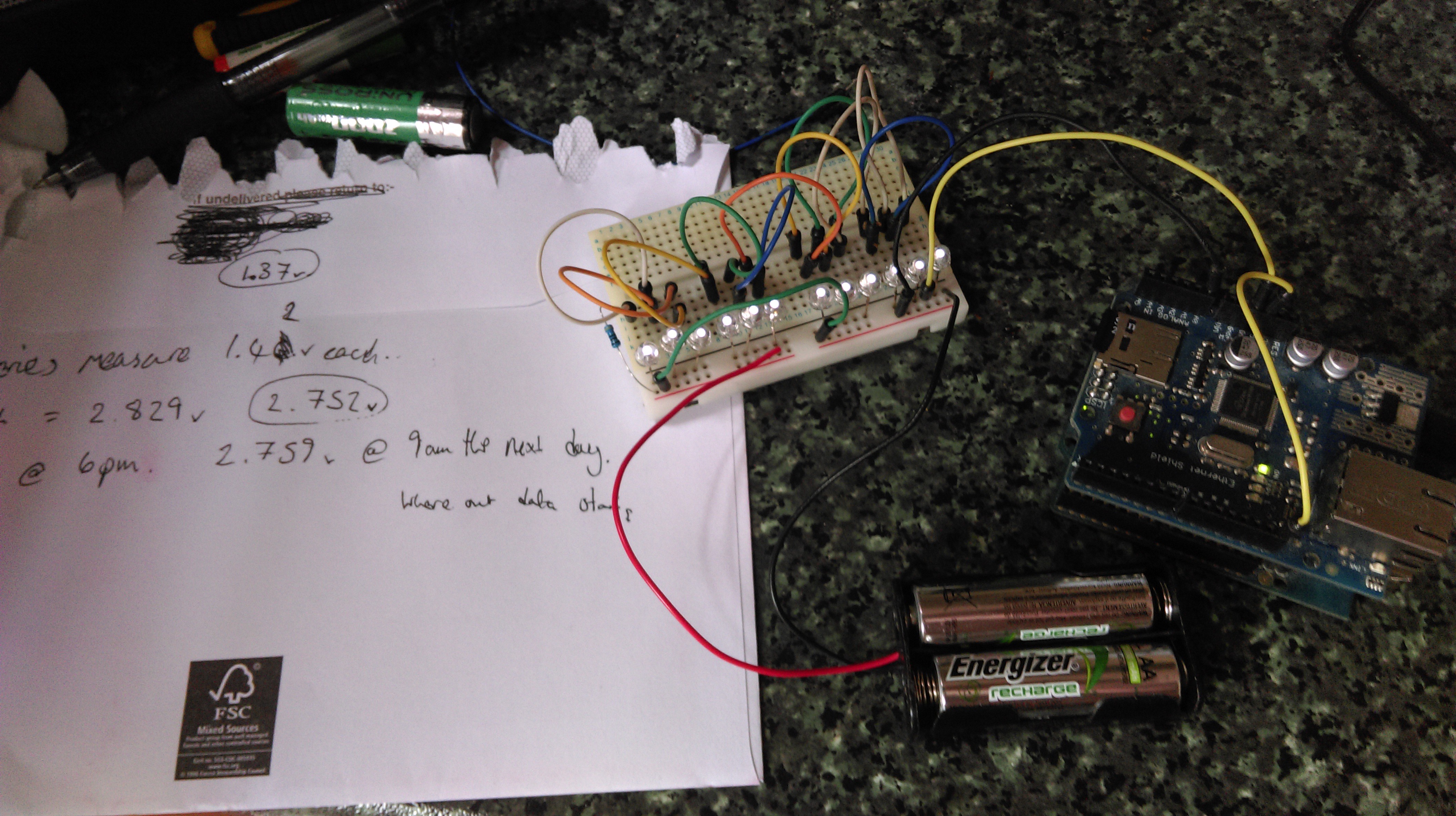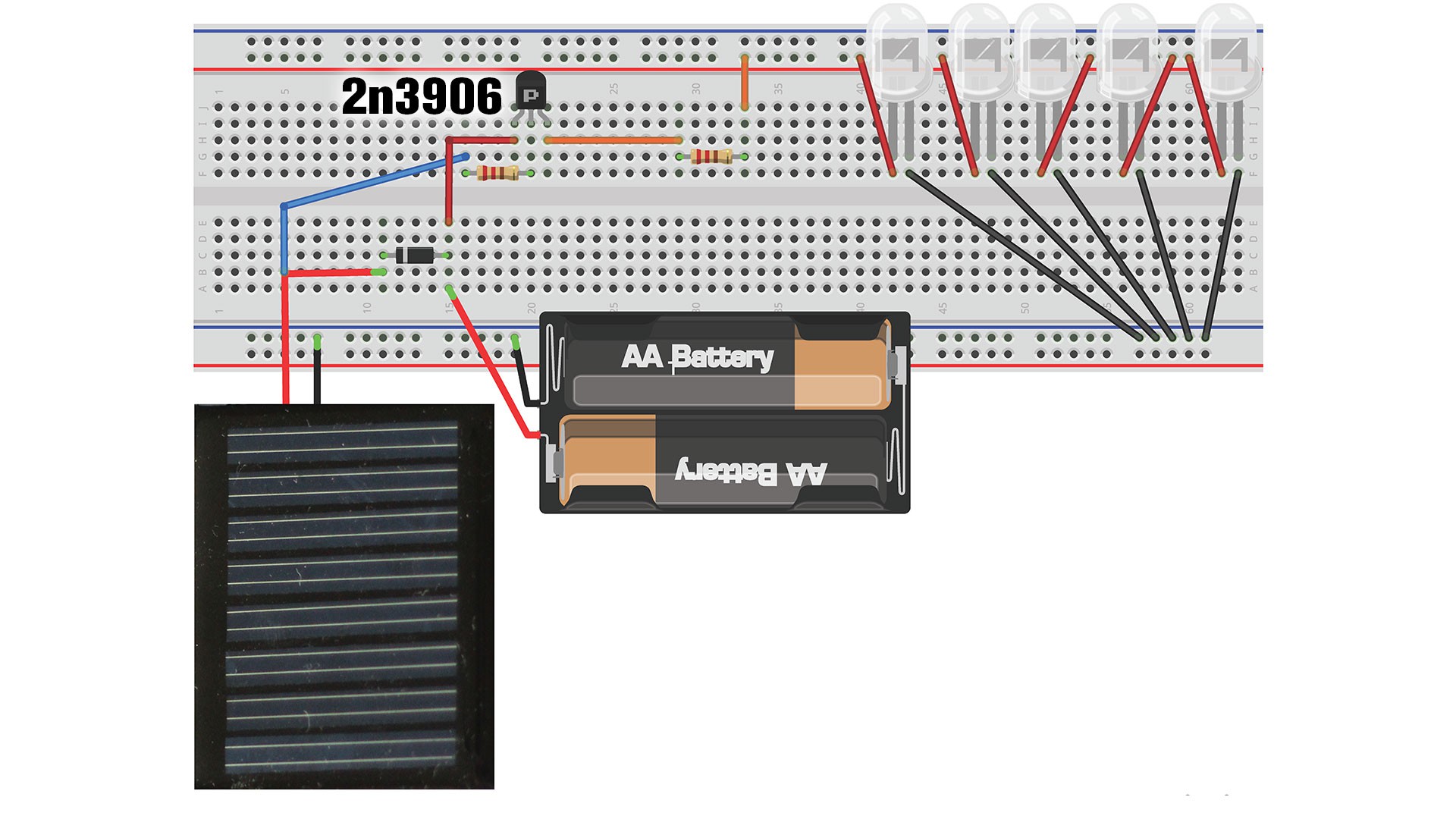-
3D Print!!!!!!
08/16/2015 at 20:09 • 0 commentsIt is finally here!!!! Now I just need to fit all the parts, time to get the veroboard out.
![]()
![]()
-
3D Printing the case
08/06/2015 at 22:37 • 1 commentOk, so the title is a little misleading. I have just designed the case with a bit of help from the community and its is being printed by another lovely person from the community.
Model rendered, you can see the cutout for the solar panel and LEDs
Here is the sliced model ready for printing
Ridiculously excited to have a 3D printed object in my hands.
-
It is all coming together
07/26/2015 at 18:31 • 0 commentsI am quite satisfied with the progress so far, just one more part to decide on and they I can concentrate on creating an equaly simple method of packaging this thing. Of course, it needs to be lightweight and waterproof. More testing :-( required I am sure.
-
More testing, I know it is a bit boring
07/20/2015 at 13:01 • 0 commentsMore testing complete with the solar panel and batteries in circuit.
![]()
This is a little graph (actually quite big) of the 4v solar panel in circuit and charging the batteries. I hooked up my multimeter to a laptop to record mAs and rigged up and Uno + Ethernet shield to record the voltage. I only ran this for just over an hour because it was a day with patchy cloud and I was worried about rain (not waterproof yet). Still, the results are encouraging.
The voltage output from the solar panel is pretty steady and around the level I need, certainly enough to charge the batteries. The current level fluctuates a lot, this is down to cloud cover and angle toward the sun.
If I can source a diode with a lower voltage drop diode, like a good Shotkky diode or perhaps use a reversed P Channel Mosfet bodge, then the voltage from the panel to the batteries will be more than sufficient.
In terms of current the average making it into the batteries over the time period was 4ma, sounds a bit crap right? Well in just over an hour on a cloudy day the battery voltage increase by 0.05v and on a sunny day it would be much more efficient. You can see from the graph where the sun appear from behind the clouds which yielded a whopping 21ma at peak. If we could chuck that into the batteries we could run the lights for 40 hours. If you recall the voltage drop on the batteries running the LEDs for 2 hours was 0.005v.
Should I worry about over charging the batteries? Not really. NiMh batteries tend to lose some of their charge each day and a trickle charge of 0.1c (100th of the battery's capacity) is fine according the the battery manufacturer.
![]()
I forgot to take a picture outside... sorry.
With a bit of careful part choosing for the diode or equivalent and some circuity to switch on and off the LEDs (Probably a transistor from solar panel) this setup should meet the requirements.
![]()
Woahh! Steady on there, this panel is producing a massive 0.06 watts at peak!!!!!!
-
Test Results
07/13/2015 at 20:27 • 0 comments**These results were confirmed by periodic measurements with my digital multimeter**
So after leaving my test for 2 days and forgetting to insert an SD Card for 1, I finally have some results.
![]()
I wanted to test our the voltage drop, which helps me understand the discharge curve of the batteries. These are often available for popular batteries but never in the sub-milliamp range. My results show a clear trend and some evidence of leveling out, which is what I would expect as a NiMH battery tends to stick at 1.2v for longer. This could mean the batteries would last a lot longer that I assume even though 2.4v does mean pretty low brightness.
I would like to er of the side of caution with any claims about runtime.
I also calculated a current graph using the known 460 ohm resistance and the voltage.
![]()
Kinda the same right? Voltage and current are directly related in this scenario so this is what I would expect to see.
Next up, the solar panels.
-
Doing some testing
07/12/2015 at 11:21 • 0 commentsI have the basics down, solar panel charges the batteries, batteries power the LEDs switched by a PNP transistor. But... I really want to be able to test how long it will last and how much power I need to gather from the solar cell/s to provided adequate illumination time.
Commence testing:
![]()
I have the batteries powering the LEDs and the UNO + Ethernet shield combo is sucking in voltage data and saving it to a CSV file on the micro SD Card. It has been running for +18 hours so hopefully that should give me enough data to look at the voltage over time, which will help me look at a discharge curve but also the current used.
I will update once the batteries drop to 2.5v which is where I think the LEDs will be too dim to be useful. I reckon they have another day left.
The next test will be of battery charging but that will have to wait until it is not raining, I know it will be waterproof but I am not.
![]()
-
The road so far...
06/26/2015 at 22:24 • 0 comments
SunSafe - A solar powered safety light
A waterproof solar powered LED safety light for your backpack, kids and pets
 David Watts
David Watts